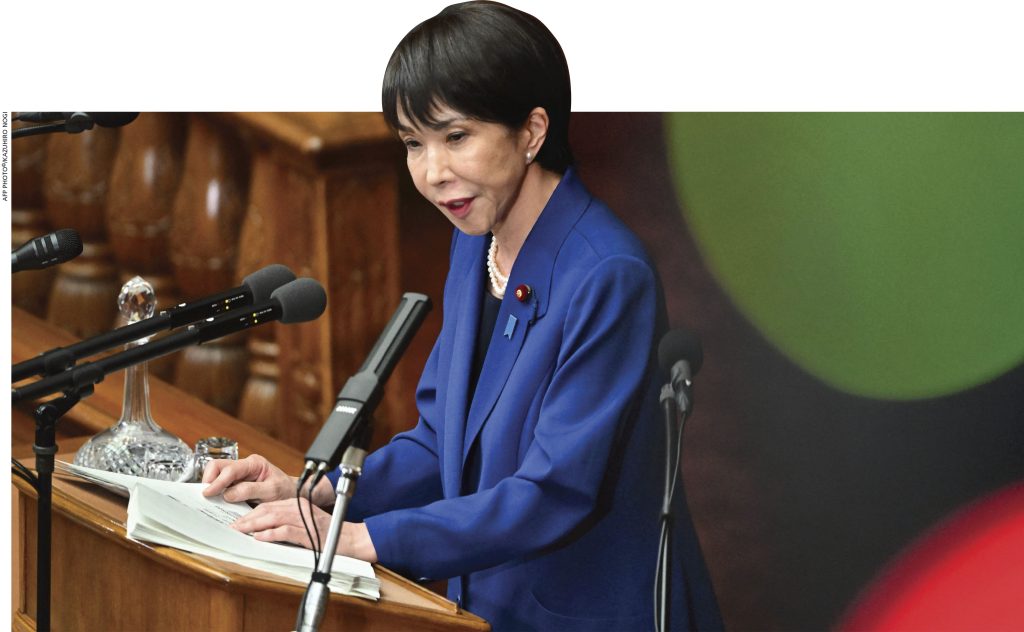JAPAN POLITICS
NIPPON ELECTS ITS FIRST FEMALE PREMIER
Saro Thiruppathy discusses Japan’s recent political milestone following the election of its first female prime minister to the National Diet

Japan’s Liberal Democratic Party (LDP) has been dogged by scandals and corruption featuring successive leaders who held the post of prime minister. These men included former premiers Yasuhiro Nakasone, Noboru Takeshita, Fumio Kishida, Shigeru Ishiba, Naoto Kan and Shinzo Abe.
Nevertheless, the Diet seems to be under the spell of the LDP, which has occupied government benches for most of the past 70 years – and it has even elected the nation’s first female Prime Minister Sanae Takaichi.
Of late however, the Jimintō (as it is known) appears to have lost much of its political lustre among voters due to financial scandals, a disunited leadership and national economic losses.
Ishiba’s recent resignation saw the party being forced to form a precarious minority government in October with the Japan Innovation Party (JIP) after the Buddhist backed Komeito – a party of self-proclaimed ‘humanitarian socialism’ – pulled out of the governing alliance. Though JIP will sit with the government, it will not serve in Takaichi’s cabinet.
CLAIM TO FAME As soon as Takaichi won the leadership of the LDP – and subsequently, the nation – her past role as a heavy metal drummer during her college days was the first item of interest to be published by media houses throughout the world.
Her political career has been and continues to be ultraconservative however, even though the Jimintō calls itself a ‘liberal coalition.’
The JIP is certainly not liberal: it remains a conservative, centre right to right-wing populist political party. But the humanitarian socialist Komeito, which withdrew from the government alliance, had a more dovish and centrist approach.
Although the LDP leans towards traditional conservative policies such as low taxes and minimal restrictions on businesses, it supports a strong welfare state. However, Takaichi is a strong advocate for self-reliance through economic growth and incentives, and has been extremely critical of policies that promote dependency.
She favours the Modern Monetary Theory (MMT), which promotes deficit spending on issues that the government considers important. This is contrary to mainstream neoclassical economics that perceives government debt and deficits as significant constraints, which require careful management.
Takaichi is also a firm follower of former prime minister Abe’s leadership style, and has been pushing for the government to play a more assertive role in Japan’s military and revision of Article 9 of the constitution, which renounces war as a sovereign right and prohibits the maintenance of a military force with the potential for armed conflict.
She is also a regular visitor to the Yasukuni Shrine, which was founded in 1869 by Emperor Meiji to commemorate those who died serving their nation. This is a controversial place for the Chinese, as well as North and South Koreans, since it also honours 14 convicted Class A Japanese war criminals.
These war criminals were enshrined during a secret ceremony in 1978 by the shrine’s chief priest, former naval officer Nagayoshi Matsudaira, after he rejected the verdicts handed down by the International Military Tribunal for the Far East (IMTFE) – a.k.a. the Tokyo War Crimes Tribunal.
RIGHT-WING TILT Takaichi favours ultraconservative policies on many social issues including same-sex marriage, female succession to the imperial throne, revisiting Article 9 of Japan’s constitution and strengthening that country’s alliance with the US.
She also promotes a nationalistic perspective of Japanese history and favours rewriting it.
Takaichi has even criticised the Murayama Statement of 1995, which apologises for her country’s wartime atrocities and colonial rule, and the Kono Statement of 1993 that specifically acknowledges Japan’s role in the coercion and management of ‘comfort women’ during WWII.
RED FLAG Though Takaichi broke through the glass ceiling in Japan and became the first female leader of her country, she hasn’t translated her promises of gender diversity into action.
Her cabinet of ministers is still male dominated; although for the sake of tokenism, she has awarded the finance portfolio to Satsuki Katayama and appointed Kimi Onoda as Minister for Economic Security, Foreign Nationals and Immigration.
It seems that Takaichi’s hawkish nationalist perceptions won her the backing of the Japan Innovation Party. In spite of it helping her secure a victory however, Takaichi’s alliance is jittery, and she will need to secure the support of opposition parties to pass legislation.
This is a serious red flag for the continued duration of her government.
As a protégé of Abe, it’s possible that Takaichi will emulate his policies – particularly with regard to the economy and establishment of a stronger military. But her tenuous grip on power may not enable Japan’s new premier to achieve very much in terms of constitutional amendments.
She has always been an ardent admirer of former British prime minister Baroness Margaret Thatcher and her anti-immigration policies. And in addition to being anti-immigration and hawkish, Takaichi also promotes an anti-China policy.
All these ultraconservative qualities, together with her admiration for Abe and a desire to rewrite history, have already endeared her to US President Donald Trump who shares many of her likes and dislikes.



